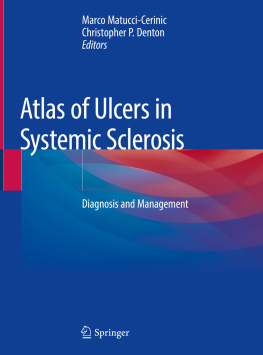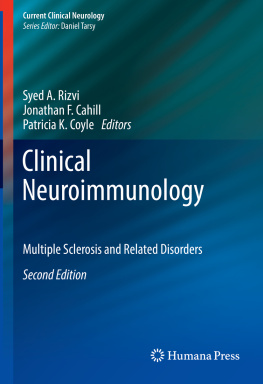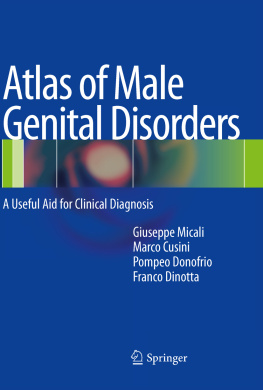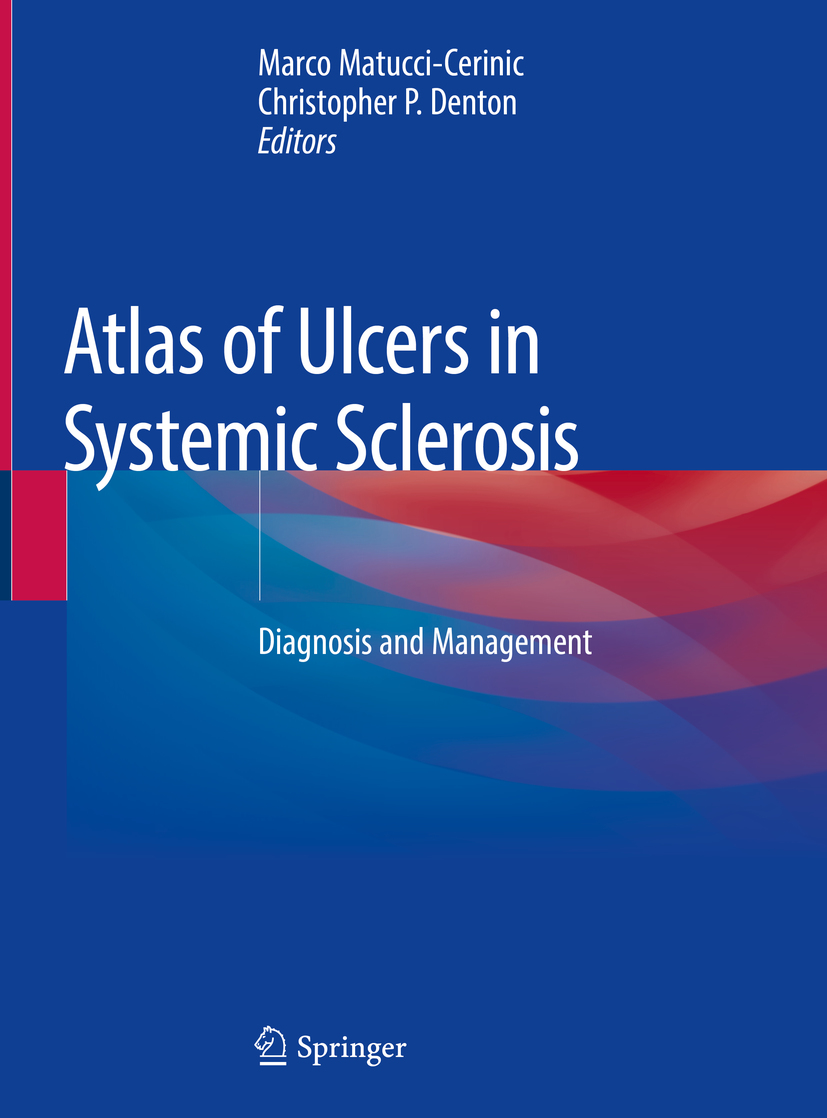Editors
Marco Matucci-Cerinic
Department of Experimental and Clinical Medicine, University of Florence, Florence, Italy
Department of Geriatric Medicine, Division of Rheumatology, AOUC, Florence, Italy
Christopher P. Denton
Division of Medicine, University College London, Centre for Rheumatology, Royal Free Hospital, London, England
ISBN 978-3-319-98475-9 e-ISBN 978-3-319-98477-3
https://doi.org/10.1007/978-3-319-98477-3
Library of Congress Control Number: 2018959558
Springer Nature Switzerland AG 2019
This work is subject to copyright. All rights are reserved by the Publisher, whether the whole or part of the material is concerned, specifically the rights of translation, reprinting, reuse of illustrations, recitation, broadcasting, reproduction on microfilms or in any other physical way, and transmission or information storage and retrieval, electronic adaptation, computer software, or by similar or dissimilar methodology now known or hereafter developed.
The use of general descriptive names, registered names, trademarks, service marks, etc. in this publication does not imply, even in the absence of a specific statement, that such names are exempt from the relevant protective laws and regulations and therefore free for general use.
The publisher, the authors, and the editors are safe to assume that the advice and information in this book are believed to be true and accurate at the date of publication. Neither the publisher nor the authors or the editors give a warranty, express or implied, with respect to the material contained herein or for any errors or omissions that may have been made. The publisher remains neutral with regard to jurisdictional claims in published maps and institutional affiliations.
This Springer imprint is published by the registered company Springer Nature Switzerland AG
The registered company address is: Gewerbestrasse 11, 6330 Cham, Switzerland
Preface
Systemic sclerosis (SSc), also called scleroderma, is an intransigent disease with many manifestations and has high mortality due to involvement of the vital organs such as the heart, lungs, gut and kidneys. However, it also has an enormous burden of non-lethal complications, and it is these features of the disease that challenge patients and health-care professionals daily. Of the non-life-threatening aspects of the disease, digital ulceration provides perhaps the most striking external manifestation of vasculopathy. Although they are not life-threatening, digital ulcers cause enormous pain, impact function and quality of life and can lead to serious local complications such as gangrene, osteomyelitis and permanent tissue loss. This atlas has been compiled to provide practical advice and information about management of digital ulcers and to address the diversity of the ulcers that can occur. The wide range in appearance and features of ulcers reflects their complex and multifaceted pathogenesis but also underlies some of the well-recognised difficulty of undertaking clinical trials to underpin evidence-based management of ulcers.
The first topic considered in this book is definition of ulcers. Definition is linked to pathology but also requires attention to the practical aspects of diagnosis and classification. Definition necessitates consideration of pathology therefore of the pathobiology that underlies SSc, vasculopathy, ulceration and repair. It is ironic that SSc, which in its worst forms is associated with severe scar-like thickening of the skin, also leads to ulceration and slow repair of skin lesions at sites of poor blood supply or minor physical trauma. This is perhaps a reminder that SSc is perhaps best regarded as a disease of dysregulated connective tissue repair where scar tissue forms in sites and to an extent that is not needed but cannot be developed at areas that need to heal appropriately. This dilemma may underlie the complex challenges of treatment and prevention of ulcers and explain the paradox that some drugs, such as bosentan, may reduce the formation of new ulcers but not necessarily speed up healing of lesions that are already present.
Consideration of definition and pathogenesis provides the foundation for the later sections of the book covering key topics in a series of chapters written by experts in the field. The relationship of digital ulcers to other aspects of scleroderma such as Raynauds phenomenon is considered together with the best methods of predicting patients at risk. Comorbidity is also relevant in determining the complications of ulcers. The important complications of ulcers are outlined in specific chapters in a practical way that provided advice about investigation and management.
Treatment and prevention of ulcers is now a key focus of management of SSc. Availability of guidelines and recommendations to support current therapy and regulatory approval of drugs for digital ulcer disease in some countries are testament to the ability for medical therapy to improve and treat this problem. There is an emerging evidence base to support current practice but also a need to critically evaluate available evidence and to balance the needs of prevention of ulcers with the most effective treatment of established lesions. Local and systemic aspects of management are carefully outlined and discussed.
The final section of this book provides a pictorial descriptive guide to the types and appearance of ulcers and other related lesions in SSc. Current management and future research and clinical trials in the area of ulcerations will depend on rigorous and consistent definitions and classification. In addition, it is important that terminology and descriptors are harmonised and standardised where possible. This will benefit patients through better communication and provide a platform for improved education and learning for patients and health-care professionals. Eventually patients will be better able to manage their disease, and it is a realistic hope that the large number of ongoing clinical trials to treat aspects of SSc including the skin and other organ-based diseases will together have true disease-modifying potential. Thus, ulcers may become less frequent, management may be more consistent and effective, and clinical trials specifically addressing ulcers can be targeted to areas of greatest unmet medical need.
This volume represents substantial and sustained effort fuelled by the desire to improve outcomes for our patients and shed light on a common but previously neglected aspect of SSc. It is our hope that by sharing experience and expertise in this way, the outlook for patients with SSc and ulcers will be less bleak.
Christopher P. Denton
Marco Matucci-Cerinic
London, UK Florence, Italy















